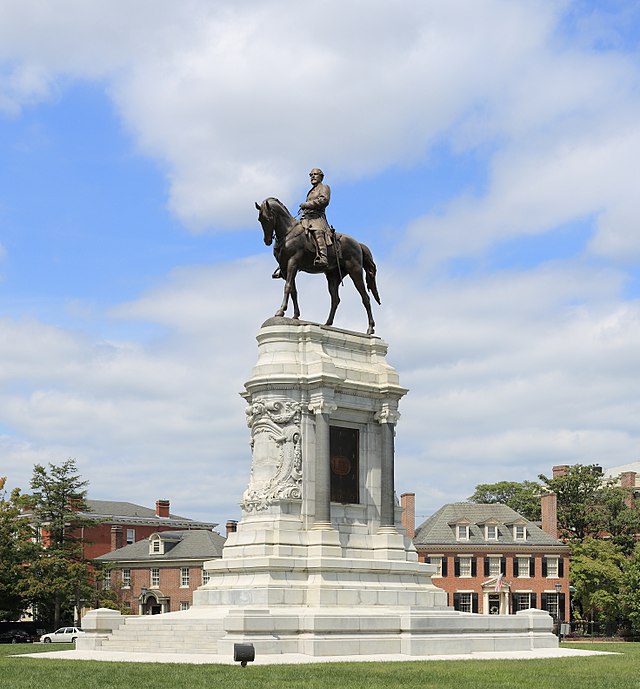Virginia’s Largest Confederate Statue Removed
The statue of Robert E. Lee before being torn down.
On September 8th, 2021, one of Virginia’s largest Confederate monuments, the General Robert E. Lee statue, was removed—marking a new era for the state, previously regarded for its past Confederate monuments. The bronze statue was lifted off its pedestal on Monument Avenue as a crowd of Virginians cheered on its removal.
An intense national debate took place discussing the statue’s purpose and its placement. According to the New York Times, “The Lee statue was erected in 1890, the first of six Confederate monuments — symbols of white power.” Ultimately, a pair of rulings dictated a shift in political mentality for Virginia and authorized the statue’s removal. With the state’s growing diversity and uprising movements such as Black Lives Matter, many citizens began to disagree with the statue’s history as it “glorifies the Lost Cause of the Civil War,” says Governor Ralph Northam, the governor of Virginia. Robert E. Lee “was a Confederate general who led the South’s attempt at secession during the Civil War,” according to History.com. He led armies against Union forces and fought in many battles such as Gettysburg and Antietam. Lee actually was not a secessionist, a person who wanted to separate from the Union, but he did not fight for the rights of the slaves either. He joined the Confederates, was quickly named general, and became the army’s leader for the South’s fight for secession. Secession, as defined by Merriam Webster’s Dictionary, “in practical terms meant that about a third of the population with substantial material resources [that] had withdrawn from what had constituted a single nation and established a separate government.” Secessionists were also the group of people who wanted to institute slavery, according to Battlefields. Lee did not own any slaves directly, but he inherited hundreds of slaves from his wife, once they married – a history that represents an inhumane racial mentality in American politics. Many wanted the statue removed due to the traumatic allusions it conveys, specifically for Americans who have been taught that the American Civil War was solely a fight for state rights, despite a large portion of the conflict being fought in defense of slavery as well.
At exactly 8:54 am, the statue came down, evoking cheers from the crowd. Many Virginians were in disbelief at this incident. David Bailey, the black owner of Arrabon, a non-profit organization striving to help churches with racial reconciliation work, commented in an interview with the New York Times, “I would have thought somebody would blow up Richmond first before anyone would have let [this] happen, It’s a modern-day miracle.” He continues, “this city belongs to all of us, not just some of us, now we can try to figure out what’s next. We are creating a new legacy.” Another citizen, Irv Cantor, a white, moderate Democrat, voices his opinion in the same interview. He states that at first he “was naïvely thinking that we could keep these statues and just add new ones to show the true history, and everything would be fine.” But his opinion began to change once notable events revolving around race began to be commonly talked about – namely the killing of George Floyd and the rise of the BLM movement. He “now understands the resentment that folks have toward these monuments,” and believes that these artifacts simply can’t exist anymore. The removal of this statue was a significant step towards permanently removing and building similar constructions. According to the New York Times, “there were about 220 memorials on public lands in 2017. Today, about 190 are still standing.”
Whether you are one to stand in opposition or in agreement with the statue’s removal, the discourse and debate around similar issues will perpetuate as more people formulate strong opinions on such topics. Robert E. Lee statue’s removal carves a new area of discussion around racial theory and ethnic history in America, paving the way for the removal of many similar statues. .






